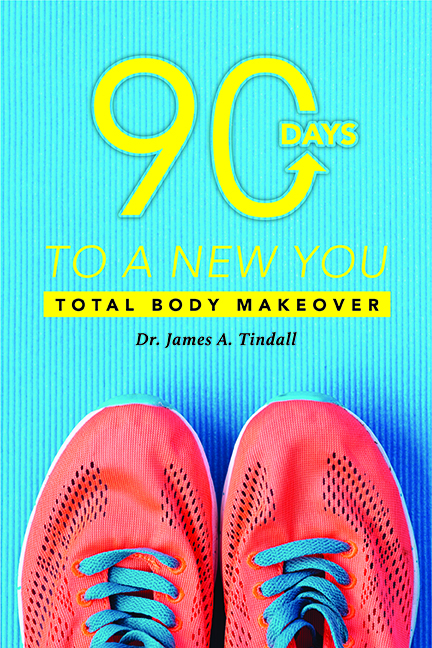Do you want a healthier lifestyle? Fall is arriving, which makes for nice cool workout weather. Get started on your fitness program now in 5 easy steps.
Beginning a good fitness program may be one of the best things you can do for your health and longevity. Physical activity can reduce your risk of chronic disease, improve your balance, and coordination, help you lose weight, and improve sleep habits and self-esteem. Best of all, you can start your program with five easy steps. What are these steps? They include assessing your fitness level, designing your fitness program, assembling your fitness equipment, getting started, and monitoring your progress.
1. Assess your fitness level
Before you begin, check with your physician to ensure there are no health problems and so that you’ll feel more comfortable while you begin. All of us likely have some idea of how fit we are, but assessing and recording baseline fitness scores can give you a benchmark that you can use to judge future performance by as you progress from day to day. Let’s assess your aerobic and muscular fitness, flexibility, and body composition. To do this, record the following about your performance:
- Pulse rate – both before and immediately after walking 1 mile. If you cannot do one mile, try ½ mile;
- Record the time it takes you to walk ½ or 1 mile. If that is not doable, record the time for ¼ mile. If you are fit, record this for 1.5 miles;
- Perform as many sit ups and pushups you can do in one minute. If you cannot do full pushup and situps, try modifying them to incline pushups and crunches and record that number;
- Sit flat on the floor with legs/feet out in front of you – measure how far you can reach while bending forward;
- Measure your waist circumference, just above your hipbones; and
- Record your body mass index.
Advertisement: Amazon (click on photo for more info)

2. Design your fitness program
There are two things that make it difficult for people to get into a fitness program. First, they try to add more exercises than they can do in an allotted time and second, by doing so they generally get very sore because they have not exercised in a while. Avoid doing this and you’ll get off to a great start. You need a plan. Design an exercise program, but keep in mind the following:
- Consider your fitness goals. Are you starting a fitness program to help lose weight or, do you have another motivation, such as preparing for a marathon? Make your goals clear to help you gauge progress and stay motivated;
- Create a balanced routine
It is recommended that you get 150 minutes of moderate aerobic activity or 75 minutes of vigorous aerobic activity per week, or a combination of moderate and vigorous activity;
As an example, aim for about 30 minutes of aerobic exercise on most days of the week. Also, incorporate strength training of all the major muscle groups into a fitness routine at least two days a week;
- Start low and progress slowly. If you’re just beginning to exercise or haven’t done so for a while, start cautiously and progress slowly. The gym is there every day so, build slowly, especially in terms of weight load in strength-training exercises. Design your program so that it gradually improves your range of motion, strength, and endurance;
- Build activity into your daily routine. The biggest challenge in fitness to finding a time to exercise that fits into your schedule. Once you find it – KEEP IT! To make it easier, schedule time to exercise as you would any other appointment. Plan to watch your favorite show while walking on the treadmill, read while riding a stationary bike, or take a break to go on a walk at work;
- Plan to include different activities. Different activities (cross-training) can keep exercise boredom at bay. Cross-training using low-impact forms of activity, such as biking or water exercise, also reduces your chances of injuring or overusing one specific muscle or joint. Plan to alternate among activities that emphasize different parts of your body, such as walking, swimming and strength training.
- Allow time for recovery. Many people start exercising with frenzied zeal — working out too long or too intensely — and give up when their muscles and joints become sore or injured. Plan time between sessions for your body to rest and recover.
- Put it on paper. A written plan may encourage you to stay on track.
3. Assemble your equipment
Let’s think of this methodically. What do you need when you exercise? You likely have workout clothes of some type so, the main item is a good pair of shoes to workout in. The type you need will depend on what types of exercise you want to do such as running, biking, strength training, etc. Pick shoes designed for the activity you have in mind. For example, running shoes are lighter in weight than cross-training shoes, which are more supportive. Ask for help at your local footwear store and the sales people will be happy to guide you into the right pair.
If you plan on investing in exercise equipment, be it weights, bikes, treadmills, etc., choose equipment that’s practical, enjoyable, and most of all, easy to use. Do not buy expensive equipment without trying it out first – go to your local gym and have a go at it. With gym memberships priced low right now, you should think twice about getting your own because at about $120 per year, a standard bike or treadmill would take 5-6 years to pay off at current membership rates.
Advertisement: CytoCharge (click on photo for more info)

There are also many kinds of fitness devices to utilize if you plan on running, doing weight free exercises and so forth. So, consider using fitness apps for smart devices or other activity tracking devices such as Fitbit that tracks your distance, calories burned, or even monitors your heart rate.
4. Get started
You have done the first three steps, now it is time to simply get going. As you do so, be mindful of the following:
- Start slowly and progress gradually. Plan your time and give yourself plenty to warm up and cool down with easy walking or gentle stretching, especially the first week or so in your activities. Slowly speed up the pace and or increase the intensity for 10-20 without getting overly tired. As your endurance and stamina improves, gradually increase the amount of time you exercise until you reach 30 to 60 minutes of exercise most days of the week. If you’re going to compete, you’ll surpass these times.
- Split your exercise time if you need to. If you feel time starved, do not do all your exercise at one time; blend them into your daily activity by splitting apart what can be done in the gym and what can be done at the home or office. Often, short but more-frequent sessions have aerobic benefits too. Exercising in 10-minute sessions three times a day may fit into your schedule better than a single 30-minute session. And, walking up stairs, push ups, sit ups and other types of exercises can be done on the go at the office, during breaks, or at home.
- Creativity is a must. For example, it is likely that your workout routine includes various activities such as walking, bicycling, or running. Do not stop there, instead, take a weekend hike at the park or in the woods; run around the track at your local high school, or go swimming at your community center. The important thing to do is that while planning your workout program, find activities you enjoy and add them to your fitness routine.
- Listen to your body. If you feel pain (especially if it’s sharp), shortness of breath, get dizzy, feel nauseated, or something that doesn’t feel right, take a break. The symptoms are likely because you are pushing too hard.
- Be flexible. Stick to your plan, but if you don’t feel well on some days, give yourself permission to take a day off. Remember, a healthy lifestyle is about long-term persistence.
5. Monitor your progress
Once you get going and are being persistent, retake your personal fitness assessment about six weeks after you start your program and then again, every two months so that you can track your overall progress – write this down in a personal journal. You will likely notice that you need to increase the amount of time you exercise to continue improving. Or, you may be pleasantly surprised to find that you’re exercising just the right amount to meet your fitness goals.
One thing that happens to most of us is that we occasionally lose our motivation. If you lose motivation, set new goals and or try a new activity. Exercising with a friend or taking a class at a fitness center may help, too. This will help hold you accountable.
Starting an exercise program is an important decision, but it does not need to be an overwhelming one. By planning carefully and pacing yourself, you can establish a healthy habit that lasts a lifetime.
Finally, one of the big questions many have is, “How do a develop my own exercise program?” The answer is, you no longer need to, we have done that for you, to make it as easy as possible. Go to ‘My Workout’ section of the website and design your own program. However, be honest about your goals and fitness level. For example, do not click advanced when you’re really a beginner, nor do you want to click adding speed-strength exercises, when you likely do not know how to do them or are no longer in shape for them. You’ll find it easy to develop your own program with the ‘My Workout’ tools. Best of all, you can print it out and take it to the gym with you or store on your phone. Whether you want a 1, 2, or 4 week program, you’ll find it fun and easy and, you’ll progress quickly.







